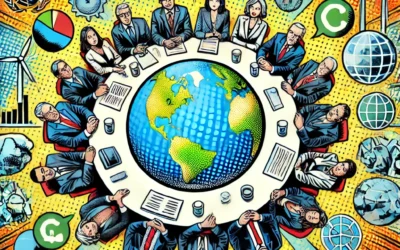Biodiversity: Threatened Species
Biodiversity is the variety of life on Earth. It includes all living organisms, from plants and animals to fungi and bacteria. Biodiversity is essential for the health and well-being of humans and the planet.
However, biodiversity is under threat from many factors, such as habitat loss, climate change, pollution, overexploitation, and invasive species. One of the indicators of biodiversity loss is the number of threatened species, that is, those that are at risk of extinction.
What are the species?
According to the IUCN Red List, threatened species are those that are classified as critically endangered, endangered, or vulnerable. These categories are based on criteria such as population size, distribution, trends, and threats. Critically endangered species are those that face an extremely high risk of extinction in the wild.
Endangered species are those that face a very high risk of extinction in the wild. Vulnerable species are those that face a high risk of extinction in the wild. The IUCN Red List is the most comprehensive and authoritative source of information on the global conservation status of species.
How many species are there?
The IUCN Red List assesses more than 120,000 species of animals, plants, and fungi, and identifies more than 32,000 of them as threatened. This means that more than one in four species are at risk of disappearing forever.
The most threatened groups are amphibians, with 41% of species threatened, followed by conifers, with 34%, and reef corals, with 36%. Among vertebrates, mammals have 26% of species threatened, birds have 12%, reptiles have 21%, and fish have 37%. Among plants, vascular plants have 22% of species threatened, mosses have 1%, and lichens have 6%. Among invertebrates, selected crustaceans have 28% of species threatened.
What are the main threats to the species?
The main threats to threatened species are habitat loss and degradation, overexploitation, invasive species, pollution, and climate change. Habitat loss and degradation are caused by human activities such as deforestation, agriculture, urbanization, mining, and infrastructure development.
Overexploitation is the unsustainable use of natural resources, such as hunting, fishing, logging, and harvesting. Invasive species are those that are introduced to new areas, either intentionally or accidentally, and compete with native species for resources and space.
Pollution is the contamination of the environment by chemicals, waste, noise, and light. Climate change is the alteration of the global climate patterns due to the increase of greenhouse gases in the atmosphere, resulting in changes in temperature, precipitation, sea level, and extreme events.
What are the impacts of the species?
Threatened species have ecological, economic, social, and cultural impacts. Ecologically, the species play important roles in maintaining the functioning and resilience of ecosystems. They provide services such as pollination, seed dispersal, nutrient cycling, pest control, and soil formation.
Economically, threatened species contribute to the livelihoods and well-being of millions of people. They provide food, medicine, materials, and tourism opportunities. Socially, the species are part of the identity and heritage of many communities. They inspire art, literature, religion, and education. Culturally, the species have intrinsic value and deserve respect and protection.
What are the solutions for threatened species?
The solutions for threatened species are based on conservation actions that address the root causes and drivers of biodiversity loss. These actions include:
- Protecting and restoring habitats and ecosystems
- Reducing and regulating the use and trade of natural resources
- Controlling and eradicating invasive species
- Reducing and preventing pollution
- Mitigating and adapting to climate change
- Raising awareness and education
- Supporting research and monitoring
- Enhancing governance and cooperation
- Providing incentives and funding
What are the indicators for threatened species?
The indicators for the species are tools that measure and communicate the status and trends of biodiversity and its threats. They help to inform decision-making, policy, and management. One of the indicators for threatened species is the OECD Threatened Species Indicator, which shows the percentage of threatened mammal, bird, and plant species in OECD countries.
According to this indicator, the average percentage of threatened mammal species in OECD countries was 18.8% in 2015, while the average percentage of threatened bird species was 17.9%, and the average percentage of threatened plant species was 14.8%. The indicator also shows the variation among countries and regions and the changes over time.
Other indicators for the species are the Living Planet Index, which measures the population trends of thousands of vertebrate species, and the Sampled Red List Index, which measures the risk of extinction of a representative sample of species across different taxonomic groups.
How can I help threatened species?
If you want to help threatened species, you can take the following actions:
- Learn more about biodiversity and the species, and share your knowledge with others.
- Support conservation organizations and initiatives that work to protect and restore habitats and species.
- Reduce your ecological footprint by consuming less, reusing more, and recycling.
- Choose sustainable products and services that do not harm biodiversity, such as certified organic, fair trade, and eco-friendly goods.
- Avoid buying or using products that are made from endangered or illegal wildlife, such as ivory, rhino horn, shark fin, and coral.
- Report any illegal or suspicious activities that involve wildlife trade or poaching to the authorities.
- Participate in citizen science projects that monitor and collect data on biodiversity and the species.
- Volunteer for conservation projects that involve habitat restoration, species recovery, or education.
- Adopt or sponsor the species or a conservation area.
- Donate to conservation causes that support the species and their habitats.
Conclusion
Threatened species are those that are at risk of extinction due to various human-induced factors. They represent the loss of biodiversity, which is vital for the health and well-being of humans and the planet.
There are many ways to measure and monitor the status and trends of the species, such as the IUCN Red List, the OECD the Species Indicator, and other indicators.
There are also many solutions and actions that can be taken to conserve and restore the species and their habitats, such as protecting and restoring ecosystems, reducing and regulating the use and trade of natural resources, controlling and eradicating invasive species, reducing and preventing pollution, mitigating and adapting to climate change, raising awareness and education, supporting research and monitoring, enhancing governance and cooperation, providing incentives and funding, and participating in citizen science and conservation projects. By helping the species, we are also helping ourselves and future generations.






